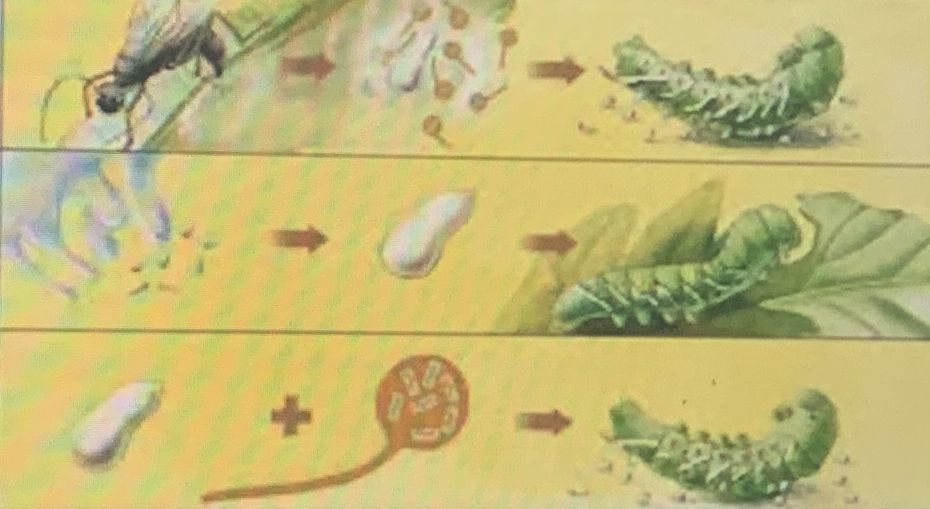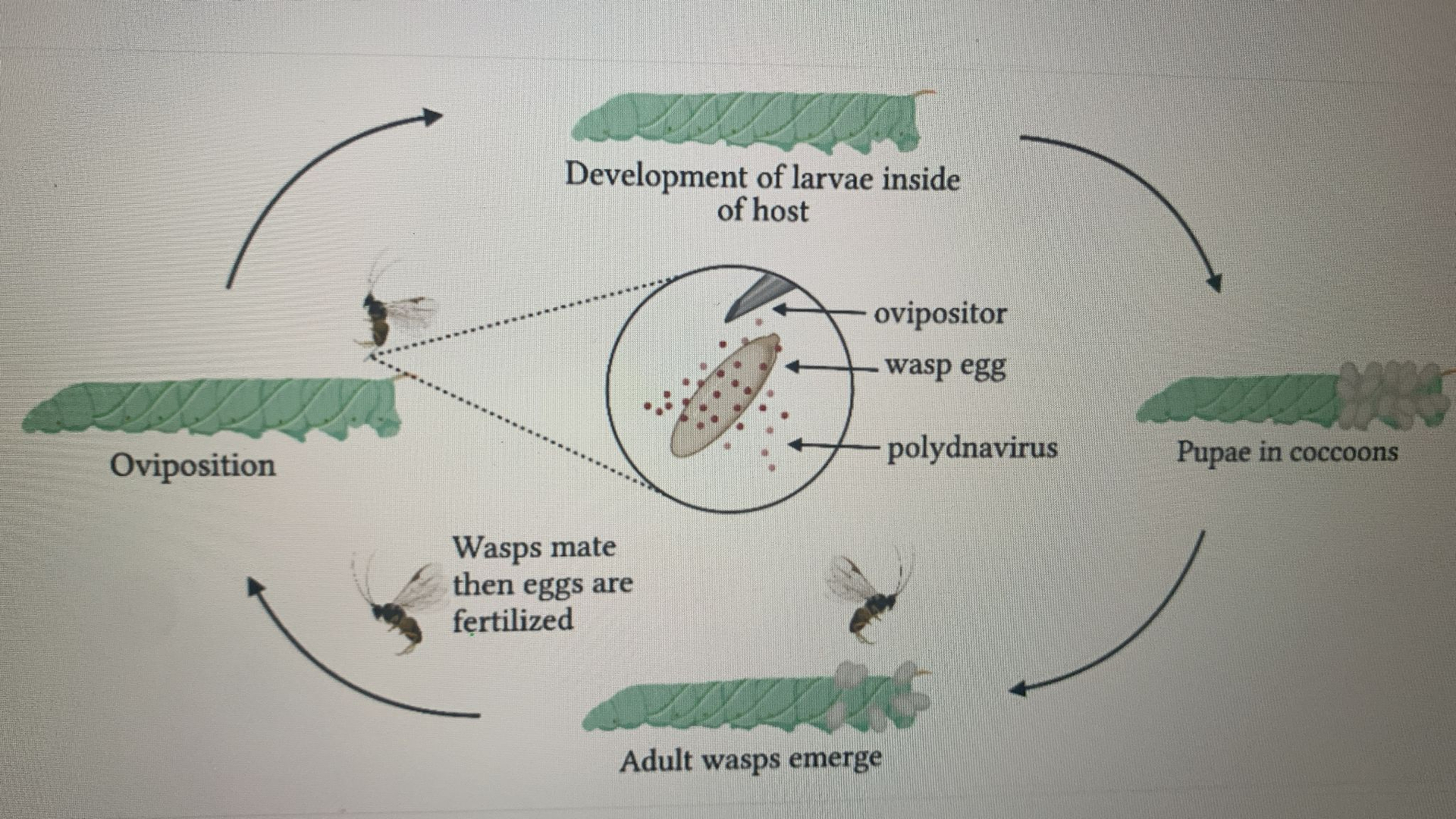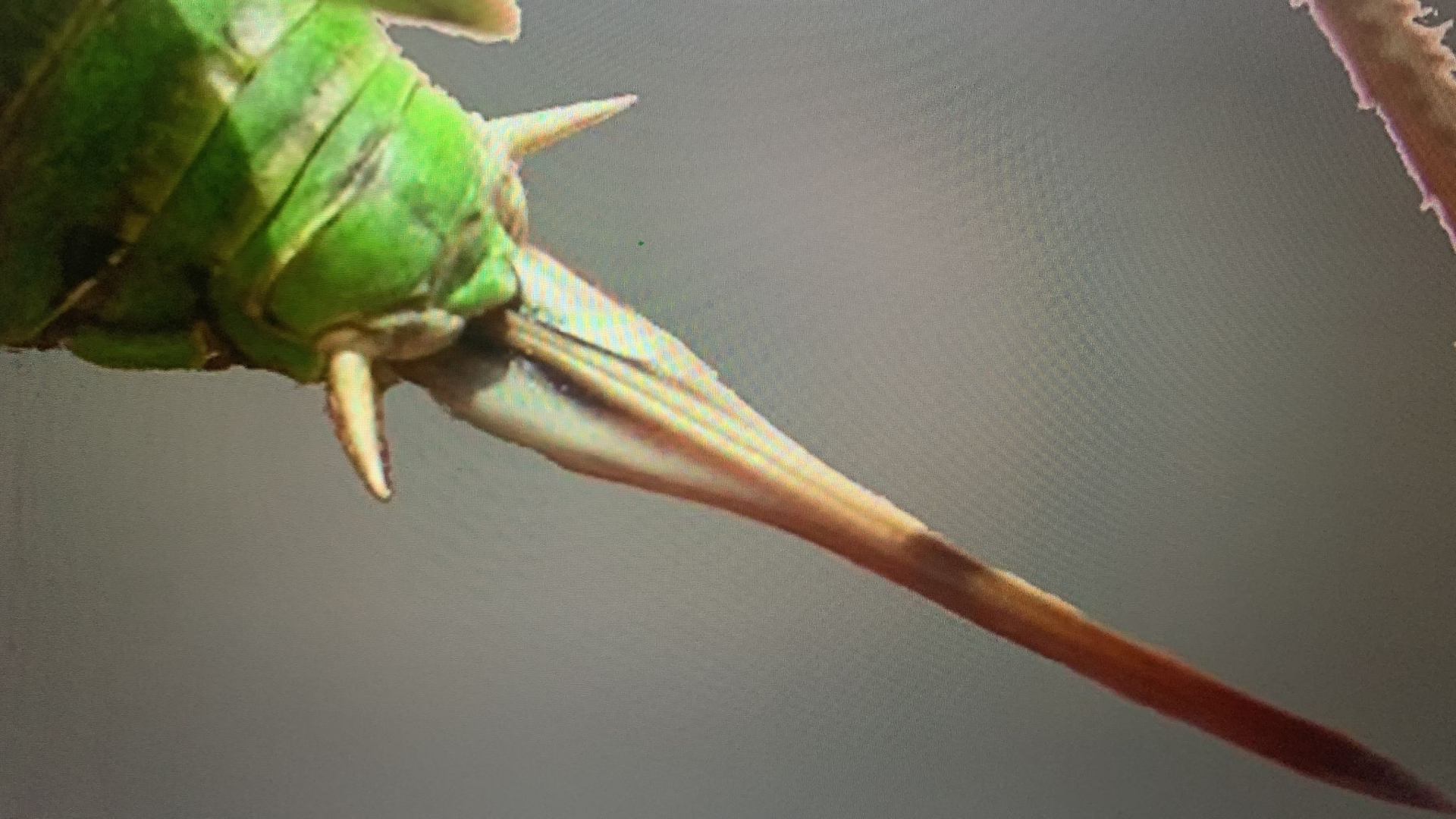Ecological Dynamics of Predation: Investigating the Complex Interaction Between the Ichneumon Wasp and the Caterpillar in Natural Ecosystems
Jasmine Chahal • 2024-05-05
𝙄𝙣𝙨𝙩𝙞𝙩𝙪𝙩𝙚 - 𝙇𝙖𝙙𝙮 𝙀𝙡𝙚𝙖𝙣𝙤𝙧 𝙃𝙤𝙡𝙡𝙚𝙨 At the nexus of this ecological drama stands the ichneumon wasp, a formidable predator revered for its cunning and efficiency. Charles Darwin once said, “I cannot persuade myself that a beneficent and omnipotent God would have designedly created the Ichneumonidae with the express intention of their feeding within the living bodies of caterpillars”
At the nexus of this ecological drama stands the ichneumon wasp, a formidable predator revered for its cunning and efficiency. Charles Darwin once said, “I cannot persuade myself that a beneficent and omnipotent God would have designedly created the Ichneumonidae with the express intention of their feeding within the living bodies of caterpillars”. Equipped with a potent venom and keen sensory faculties, this parasitic insect navigates the intricate landscape of its environment in search of suitable hosts for its offspring. Meanwhile, the caterpillar, a ubiquitous herbivore, unwittingly becomes entangled in the web of predation, serving as both prey and pawn in this complex ecological narrative.
The drama begins with the female ichneumon wasp's adventure for a suitable host—a journey guided by a sophisticated interplay of sensory cues and behavioural adaptations. As well as using their ovipositors (see image below), to detect another wasp larva inside a host, adults also use their antennae at longer range to detect small amounts of chemicals from the host – or even from leaf damage caused by the caterpillars [1]. Some have evolved a way to find hidden hosts, for example those buried deep in tree bark. Through meticulous field observations and controlled experiments, researchers have uncovered the intricacies of the wasp's host-seeking behaviours which highlight the dynamic nature of predator-prey interactions in natural ecosystems. Genomics could help scientists learn how these many different species evolved, and how they developed their specific mechanisms for targeting hosts. Ongoing research aims to uncover why certain wasp species exhibit specialisation, focusing solely on one host species, while others, like the black slip wasp (Pimpla rufipes), demonstrate a broader approach, targeting any insect pupae they encounter [1].
Once the female Cotesia wasp has laid her eggs inside the caterpillar, using a sharp tubular organ called an ovipositor the host is doomed. The larva lurks inside the flesh of the caterpillar, and feed on the haemolymph soaking up its host's nutrients and drinking its blood. The wasp larva needs to keep its host alive and therefore, it avoids damaging the vital organs. They then then emerge from the caterpillar and release chemicals that paralyse the caterpillar. With its host stuck, the larva uses specialised teeth to eat its way through the thick skin. The transformation of caterpillars into butterflies is stopped by certain wasp larvae that release hormones, preventing metamorphosis. Specific wasp species, like Cotesia glomerata which targets large white butterflies (Pieris brassicae), prolong the caterpillars' survival by sealing the entry holes with their shed exoskeletons. Remarkably, they also modify the caterpillars' behaviour to safeguard the wasp pupae. Additionally, some wasps act as 'hyperparasitoids,' preying on other parasitic wasps. Certain types of ichneumonid wasps possess a unique ability: they can probe caterpillars with their ovipositors to detect the presence of other parasitic wasp larvae. Upon finding such larvae, they lay their own eggs directly inside them.
For the hopeless caterpillar, the encounter with the ichneumon wasp triggers a complex array of physiological responses—a testament to the evolutionary arms race between predator and prey. The genome sequence of the wasp is 216 megabases in span and most of the assembly is scaffolded into 12 chromosomal pseudomolecules. The mitochondrial genome has also been assembled and is 16.6 kilobases in length [2].
The exact effects can vary depending on the species of wasp and caterpillar involved, but generally, the manipulation serves to ensure the survival and development of the wasp larvae. Through genomic analyses and transcriptomic profiling, researchers have deciphered the genetic underpinnings of the caterpillar's immune defences, revealed a diverse repertoire of immune genes and signalled pathways activated in response to parasitic attack. For instance, the caterpillar may exhibit unusual behaviours such as remaining still or protecting the developing wasp larvae from predators. In some cases, the parasitised caterpillar may even provide nourishment or protection to the developing wasp larvae until they emerge as adults. This manipulation highlights the intricate coevolutionary arms race between parasites and their hosts, where parasites evolve strategies to exploit host resources and hosts develop defences to counteract parasitic attacks. [3]
The drama of the ichneumon wasp and the caterpillar surpasses mere predator-prey interactions, offering profound insights into the evolutionary and ecological dynamics shaping natural ecosystems. By delving into the intricate interactions between these organisms, scientists deepen their understanding of the mechanisms driving biodiversity and ecosystem resilience. Furthermore, studying parasitic manipulation provides valuable insights into broader principles of evolutionary biology, illuminating the adaptive strategies and counter-adaptations governing life on Earth.
DEFINITIONS
ovipositor – a tubular structure that is used for laying eggs.
Genomics - study of an organism's genome – its genetic material – and how that information is applied.
Haemolymph -a fluid equivalent to blood in most invertebrates
Chromosomal pseudomolecules - reconstructed representations of chromosomes created from sequenced DNA fragments, aiding in the study of genome organisation.
FOOTNOTES:
[1] Darwin Tree of Life Project. "Parasitoid Wasps: Indispensable Insects You Never Think About (or Never Want To)." Darwin Tree of Life, 2023
[2] Sivell O, Broad GR; Natural History Museum Genome Acquisition Lab; Darwin Tree of Life Barcoding collective; Wellcome Sanger Institute Tree of Life programme; Wellcome Sanger Institute Scientific Operations: DNA Pipelines collective; Tree of Life Core Informatics collective; Darwin Tree of Life Consortium. The genome sequence of an ichneumonid wasp, Amblyteles armatorius (Forster, 1771). Wellcome Open Res. 2023 Feb 6;8:61. doi: 10.12688/wellcomeopenres.18920.1. PMID: 38037558; PMCID: PMC10687389.
[3] Grosman AH, Janssen A, de Brito EF, Cordeiro EG, Colares F, Fonseca JO, Lima ER, Pallini A, Sabelis MW. Parasitoid increases survival of its pupae by inducing hosts to fight predators. PLoS One. 2008 Jun 4;3(6):e2276. doi: 10.1371/journal.pone.0002276. PMID: 18523578; PMCID: PMC2386968.
See More Posts
Copyright © 2021 Govest, Inc. All rights reserved.




